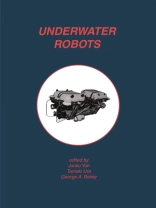All life came from sea but all robots were born on land. The vast majority of both industrial and mobile robots operate on land, since the technology to allow them to operate in and under the ocean has only become available in recent years. A number of complex issues due to the unstructured, hazardous undersea environment, makes it difficult to travel in the ocean while today’s technologies allow humans to land on the moon and robots to travel to Mars . . Clearly, the obstacles to allowing robots to operate in a saline, aqueous, and pressurized environment are formidable. Mobile robots operating on land work under nearly constant atmospheric pressure; their legs (or wheels or tracks) can operate on a firm footing; their bearings are not subjected to moisture and corrosion; they can use simple visual sensing and be observed by their creators working in simple environments. In contrast, consider the environment where undersea robots must operate. The pressure they are subjected to can be enormous, thus requiring extremely rugged designs. The deep oceans range between 19, 000 to 36, 000 ft. At a mere 33-foot depth, the pressure will be twice the normal one atmosphere pressure of 29. 4 psi. The chemical environment of the sea is highly corrosive, thus requiring the use of special materials. Lubrication of moving parts in water is also difficult, and may require special sealed, waterproof joints.
George A. Bekey & Tamaki Ura
Underwater Robots [PDF ebook]
Underwater Robots [PDF ebook]
Купите эту электронную книгу и получите еще одну БЕСПЛАТНО!
язык английский ● Формат PDF ● ISBN 9781461314196 ● редактор George A. Bekey & Tamaki Ura ● издатель Springer US ● опубликованный 2012 ● Загружаемые 3 раз ● валюта EUR ● Код товара 4679292 ● Защита от копирования Adobe DRM
Требуется устройство для чтения электронных книг с поддержкой DRM












